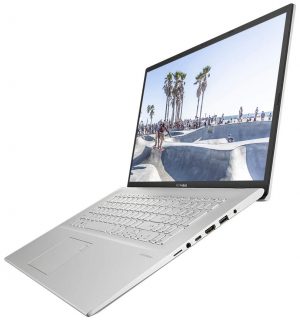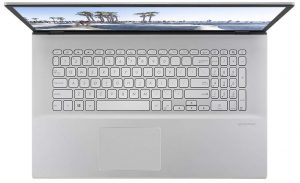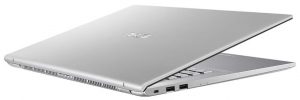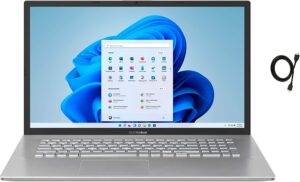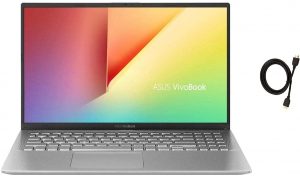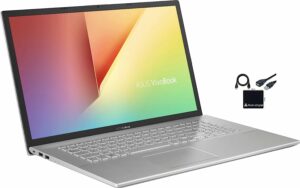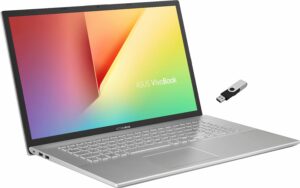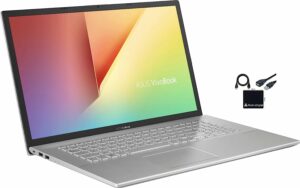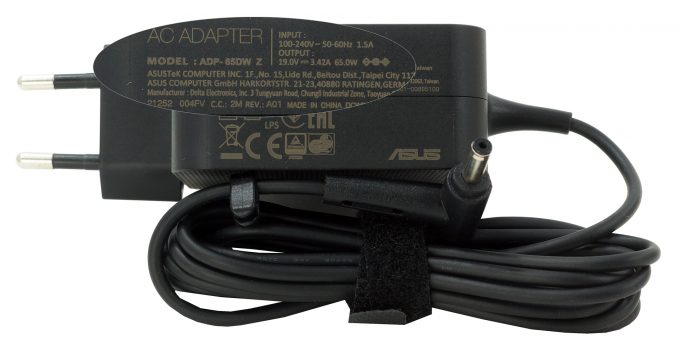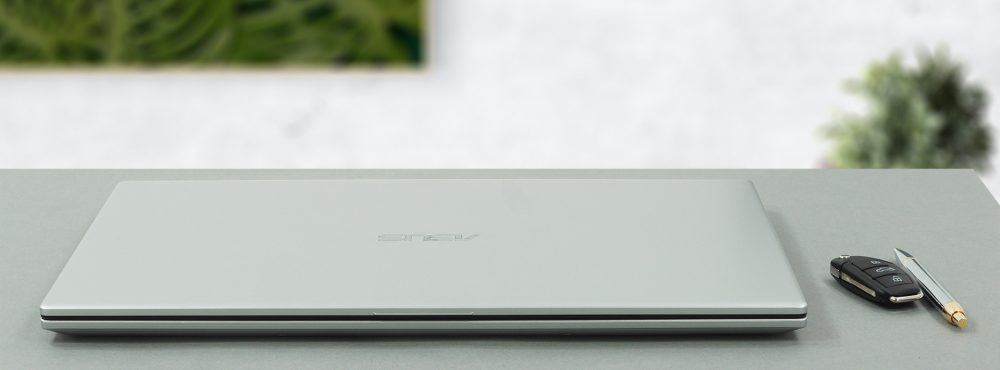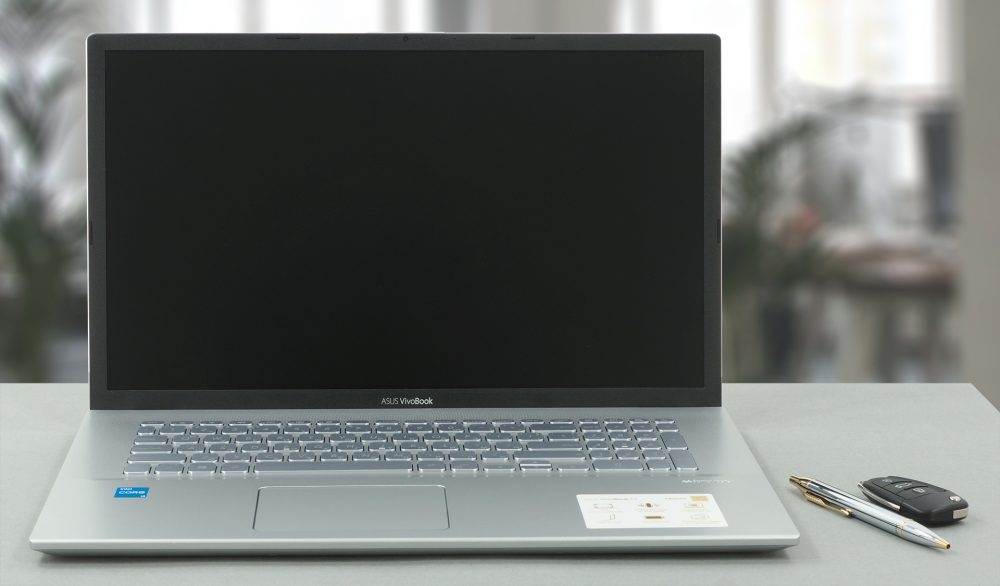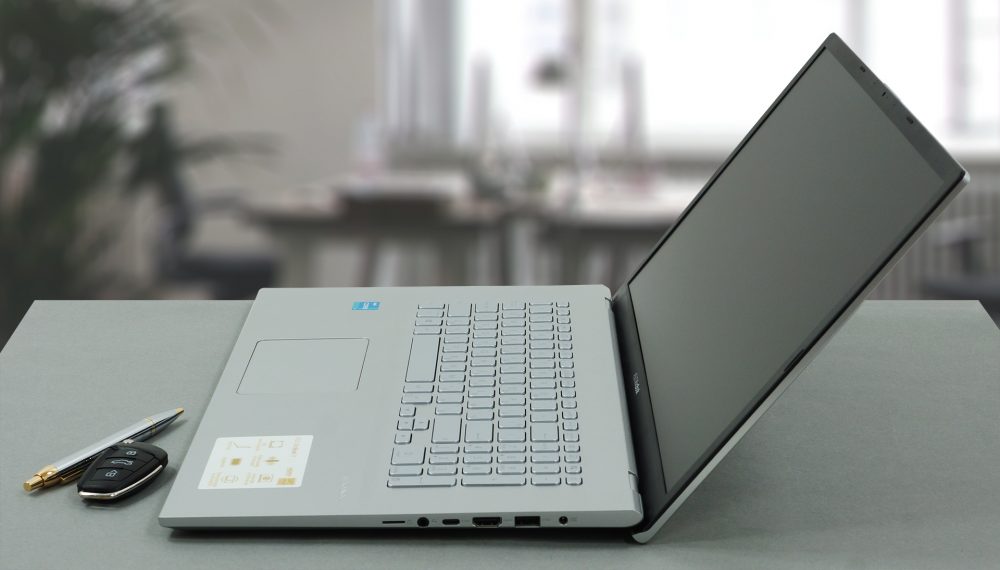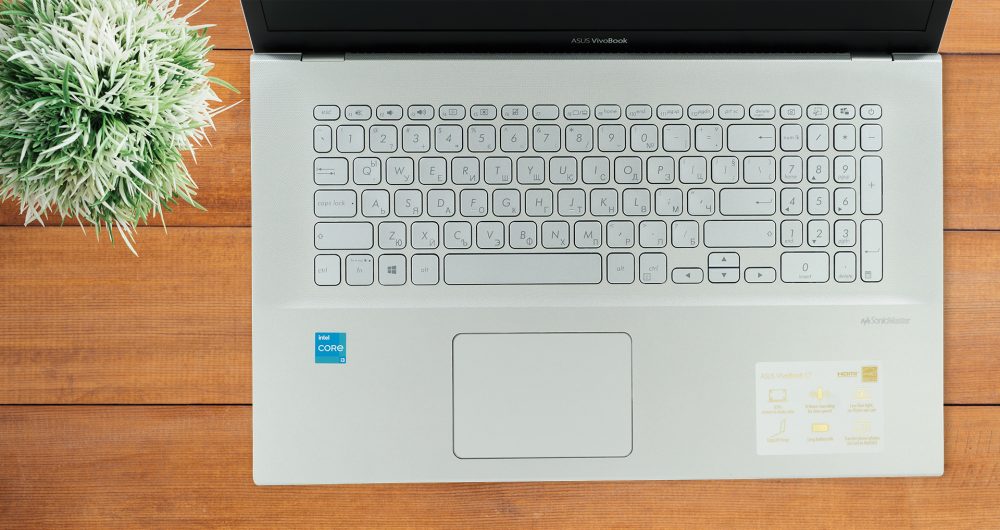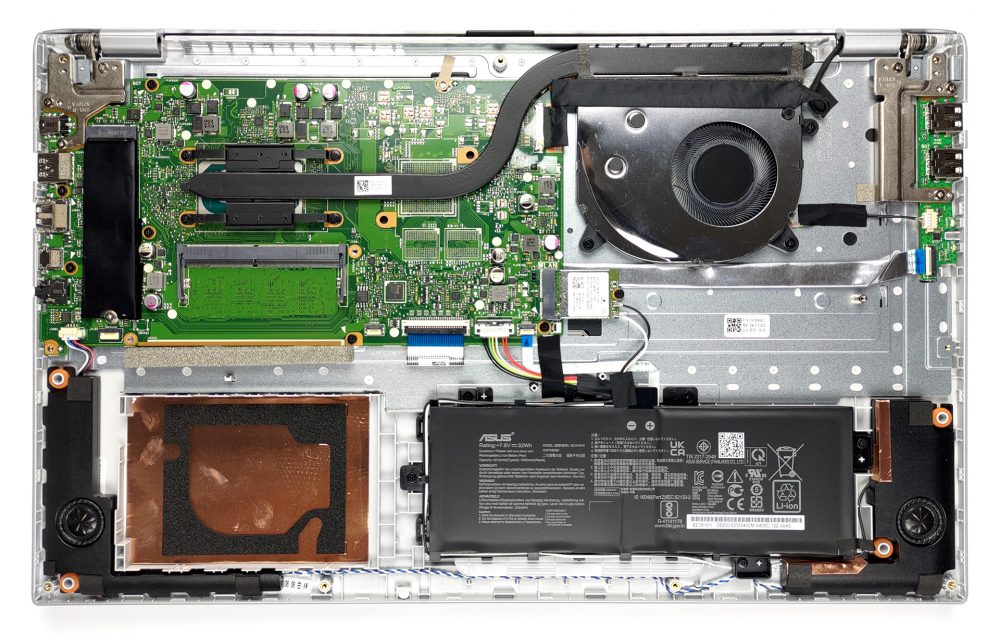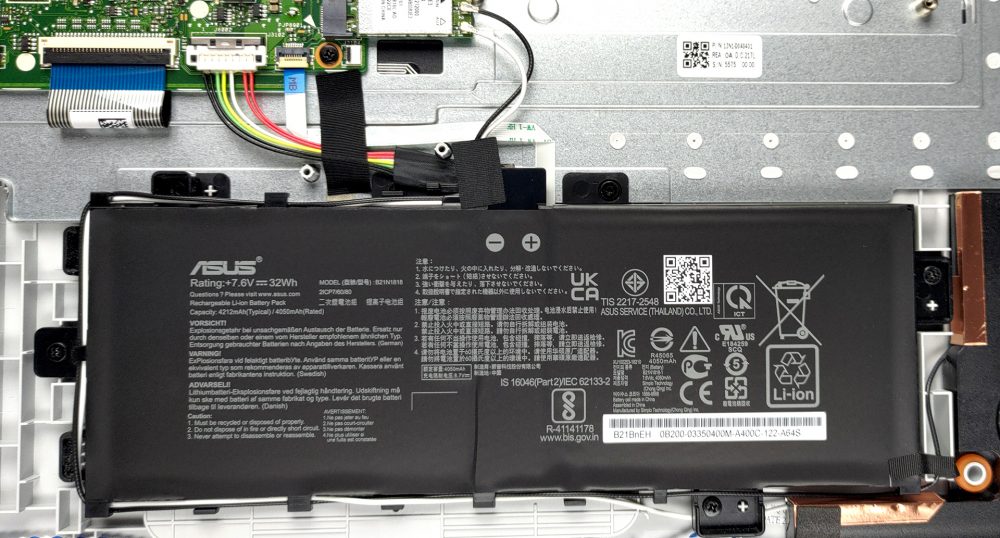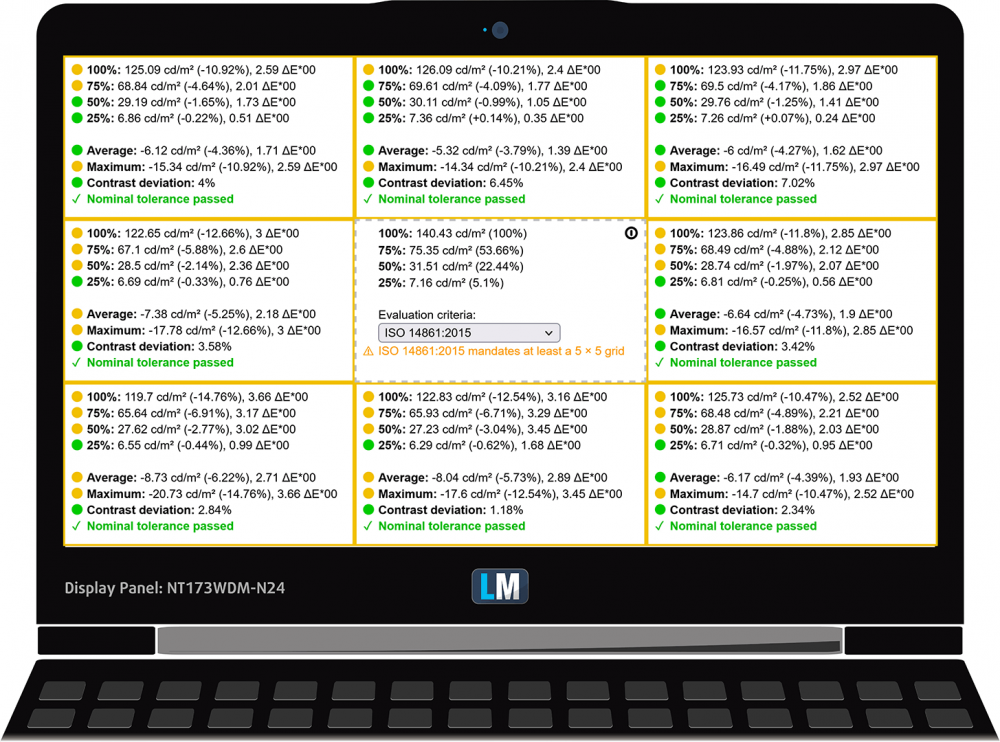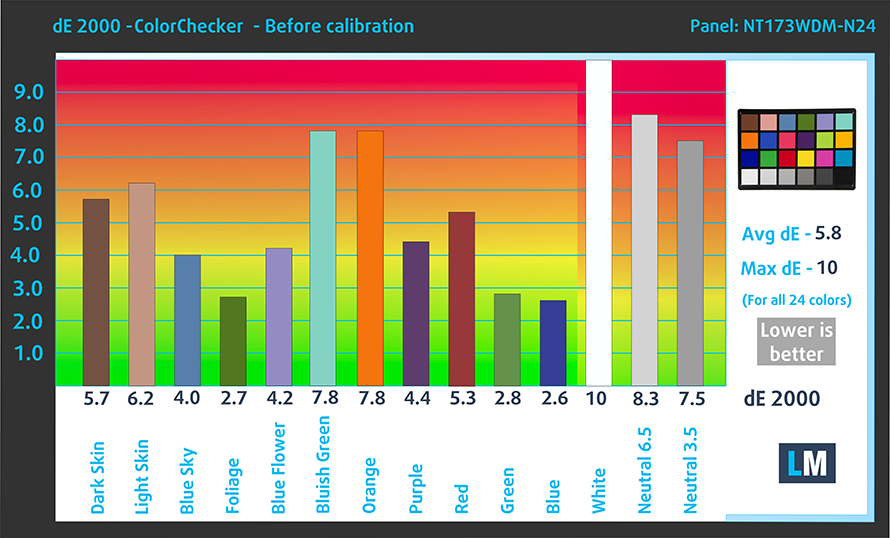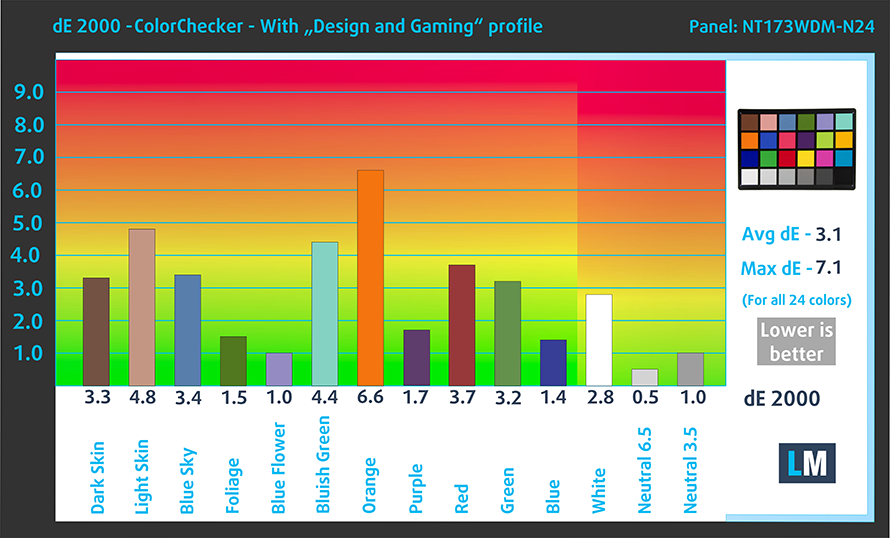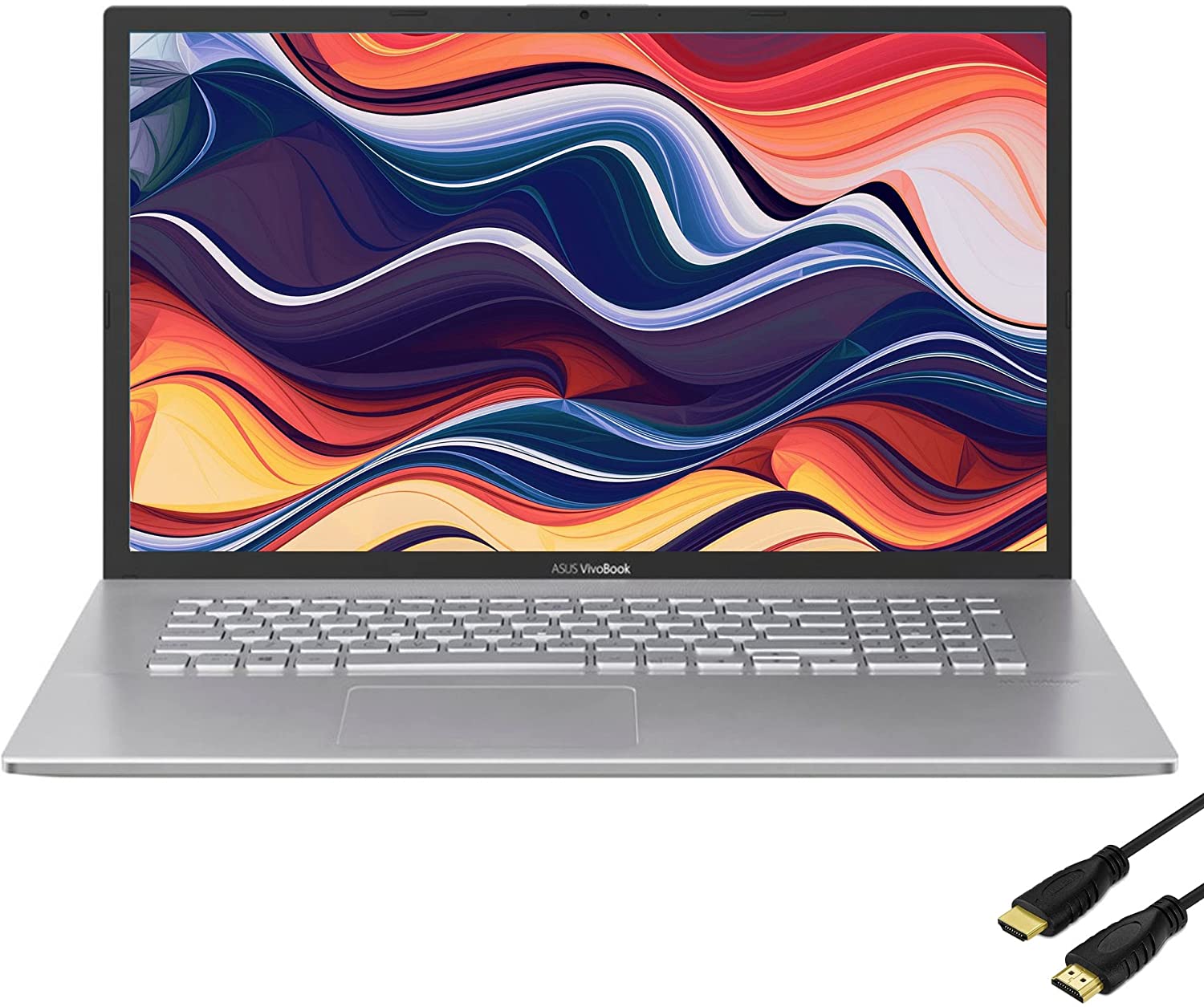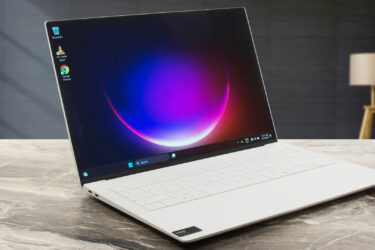ASUS VivoBook 17 X712 review – an affordable home-oriented multimedia device
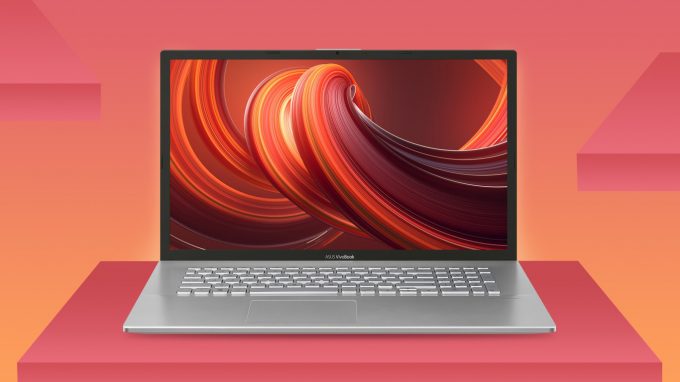 Today, we have a device that is easy on the budget and aims to be a great home multimedia machine. It is the VivoBook 17 X712 from ASUS, and uses a year (or two)-old design, and can be found with a ton of different processors from a portfolio of architectures. However, we will be focusing on the Tiger Lake models, as our particular device comes equipped with the Core i3-1115G4.
Today, we have a device that is easy on the budget and aims to be a great home multimedia machine. It is the VivoBook 17 X712 from ASUS, and uses a year (or two)-old design, and can be found with a ton of different processors from a portfolio of architectures. However, we will be focusing on the Tiger Lake models, as our particular device comes equipped with the Core i3-1115G4.
Ultimately, you can pair your VivoBook 17 X712 with a more powerful CPU, but then you miss the whole point of this type of laptop. What is good about it is that it offers a lot of screen real estate, which really reduces the need for an external monitor. This way, your kid can easily go to school from home when needed.
Well, if you want to do that, you would need a good display, won’t you? Ultimately, ASUS offers three options – 1600x900p and Full HD TN panels, as well as a Full HD IPS display. In our opinion, it is critical to get the IPS option, for a better viewing experience.
You can check the prices and configurations in our Specs System: https://laptopmedia.com/series/asus-vivobook-17-f712-x712-k712-m712-s712/
Contents
Specs Sheet
- CPU
- Intel Core i7-1165G7 #195 in Top CPUs Intel Core i5-1135G7 #197 in Top CPUs Intel Core i5-1035G1 #211 in Top CPUs Intel Core i3-1220P #146 in Top CPUs Intel Core i3-1115G4 #213 in Top CPUs AMD Ryzen 3 3250U #228 in Top CPUsIntel Core i7-1065G7 Intel Core i5-8265U AMD Ryzen 7 3700U AMD Ryzen 5 3500U
- GPU
- Intel UHD Graphics Xe G4 (48EU) #253 in Top GPUs Intel UHD Graphics G1 #261 in Top GPUs Intel UHD Graphics (Alder Lake, 64EU) #235 in Top GPUs Intel UHD Graphics #263 in Top GPUs Intel Iris Xe Graphics G7 (96EU) #226 in Top GPUs Intel Iris Xe Graphics G7 (80EU) #234 in Top GPUs Intel Iris Xe Graphics G4 #254 in Top GPUs Intel Iris Plus Graphics G7 #257 in Top GPUs AMD Radeon RX Vega 3 #260 in Top GPUs AMD Radeon RX Vega 10 #248 in Top GPUsIntel UHD Graphics 620
- HDD/SSD
- up to 1000GB SSD + up to 1000GB HDD
- M.2 Slot
- 1x 2280 M.2 NVMe slot See photo
- RAM
- up to 24GB
- OS
- Windows 10 Home, Windows 11 Home, Windows 10 S, Windows 11 Pro, Windows 10 Pro
- Battery
- 47Wh, 3-cell, 32Wh, 2-cell, 41Wh, 3-cell
- Body material
- Plastic / Polycarbonate
- Dimensions
- 406.9 x 256 x 19.9 mm (16.02" x 10.08" x 0.78")
- Weight
- 2.30 kg (5.1 lbs)
- Ports and connectivity
- 1x USB Type-C
- 3.2 Gen 1 (5 Gbps)
- 1x USB Type-A
- 3.2 Gen 1 (5 Gbps)
- 2x USB Type-A
- 2.0
- HDMI
- Card reader
- microSD
- Wi-Fi
- 802.11ac
- Bluetooth
- 5.0
- Audio jack
- 3.5 mm combo
- Features
- Fingerprint reader
- optional
- Web camera
- HD
- Backlit keyboard
- optional
- Microphone
- Speakers
- Optical drive
All ASUS Vivobook 17 F712 (X712 / K712 / M712 / S712) configurations
What’s in the box?
Inside the package, you will find nothing more than some paper manuals, and a 65W charger.
Design and construction
When it comes to the design, the VivoBook 17 X712 is a pretty device, with quite a large screen-to-body ratio. Naturally, the entire laptop is made out of plastic, which is not of very high quality, either. We saw some flexes and bends when we twisted the chassis, which is not optimal. On the other hand, this 17-inch device is extremely light at only 2.30 kg, while its profile stands at 19.9mm.
Unfortunately, the lid can’t be opened with a single hand. Otherwise, what we see on the inside is an HD camera and slim bezels around the display. Also, we see the ErgoLift mechanism to be present on this device. This is why the backside of the base lifts up slightly from the ground when you open the lid.
Next, there is the base. As with every 17-inch laptop out there, this one looks like it has too much empty space. Thankfully, ASUS used some of it for a NumberPad section on the keyboard. Interestingly, there is slight randomness in the feedback of each key. Some of them are soft, others are clicky, but almost all of them have the metallic feeling on click. Also, our unit came without a backlight.
Then, there is the touchpad. It is a fairly accurate unit, although its size is not very representative, considering the size of the laptop. However, this is where you can see a lot of flex when you push between the keyboard and the touchpad.
And if you turn the laptop upside-down, you will find two speaker cutouts, as well as a ventilation grill. Respectively, the hot air gets exhausted from a slot in between the base and the lid.
Ports
On the left side, you get a lock slot, and two USB Type-A 2.0 ports. Then, the left houses a charging plug, a USB Type-A 3.2 (Gen. 1) port, an HDMI connector, a USB Type-C 3.2 (Gen. 1) port, an audio jack, and a MicroSD card reader.
Disassembly, upgrade options and maintenance
To get inside of this device, you need to undo 10 Phillips-head screws. After that, just pry the bottom panel with a plastic tool and remove it from the body.
This rather large notebook is powered by a tiny 32Wh battery pack. Before you remove it mind the Wi-Fi antenna cables, which are wrapped around it.
In terms of memory, you get one RAM SODIMM slot with either 4 or 8GB being soldered to the motherboard. In addition to that, there is one M.2 NVMe slot, as well as a 2.5-inch SATA drive bay. Unfortunately, we didn’t get any mounting hardware inside the box.
Cooling-wise, you see a pretty standard heat pipe, running to a medium-sized heat sink. Lastly, a fan blows the heat away from the chassis.
Display quality
ASUS VivoBook 17 X712 comes with an HD+ TN panel, model number BOE NT173WDM-N24 (BOE091A). Its diagonal is 17.3″ (43.9 cm), and the resolution – 1600x900p. Additionally, the screen ratio is 16:9, the pixel density – 106 ppi, their pitch – 0.24 x 0.24 mm. The screen can be considered Retina when viewed from at least 81 cm (from this distance, the average human eye can’t see the individual pixels).

The viewing angles are uncomfortable. We offer images at different angles to evaluate the quality.

Also, a video with locked focus and exposure.
The maximum measured brightness is 294 nits (cd/m2) in the middle of the screen and 262 nits (cd/m2) average across the surface with a maximum deviation of 14%. The Correlated Color Temperature on a white screen and at maximum brightness is 7600K (average) – colder than the 6500K optimum for sRGB.
In the illustration below you can see how the display performs from a uniformity perspective. The illustration below shows how matters are for operational brightness levels (approximately 140 nits) – in this particular case at 68% Brightness (White level = 140 cd/m2, Black level = 0.48 cd/m2).
Values of dE2000 over 4.0 should not occur, and this parameter is one of the first you should check if you intend to use the laptop for color-sensitive work (a maximum tolerance of 2.0 ). The contrast ratio is mediocre 290:1.
To make sure we are on the same page, we would like to give you a little introduction to the sRGB color gamut and the Adobe RGB. To start, there’s the CIE 1976 Uniform Chromaticity Diagram that represents the visible specter of colors by the human eye, giving you a better perception of the color gamut coverage and the color accuracy.
Inside the black triangle, you will see the standard color gamut (sRGB) that is being used by millions of people on HDTV and on the web. As for the Adobe RGB, this is used in professional cameras, monitors, etc for printing. Basically, colors inside the black triangle are used by everyone and this is the essential part of the color quality and color accuracy of a mainstream notebook.
Still, we’ve included other color spaces like the famous DCI-P3 standard used by movie studios, as well as the digital UHD Rec.2020 standard. Rec.2020, however, is still a thing of the future and it’s difficult for today’s displays to cover that well. We’ve also included the so-called Michael Pointer gamut, or Pointer’s gamut, which represents the colors that naturally occur around us every day.
The yellow dotted line shows ASUS VivoBook 17 X712’s color gamut coverage.
Its display is limited just to 71% of the sRGB/ITU-R BT.709 (web/HDTV standard) in CIE1976.
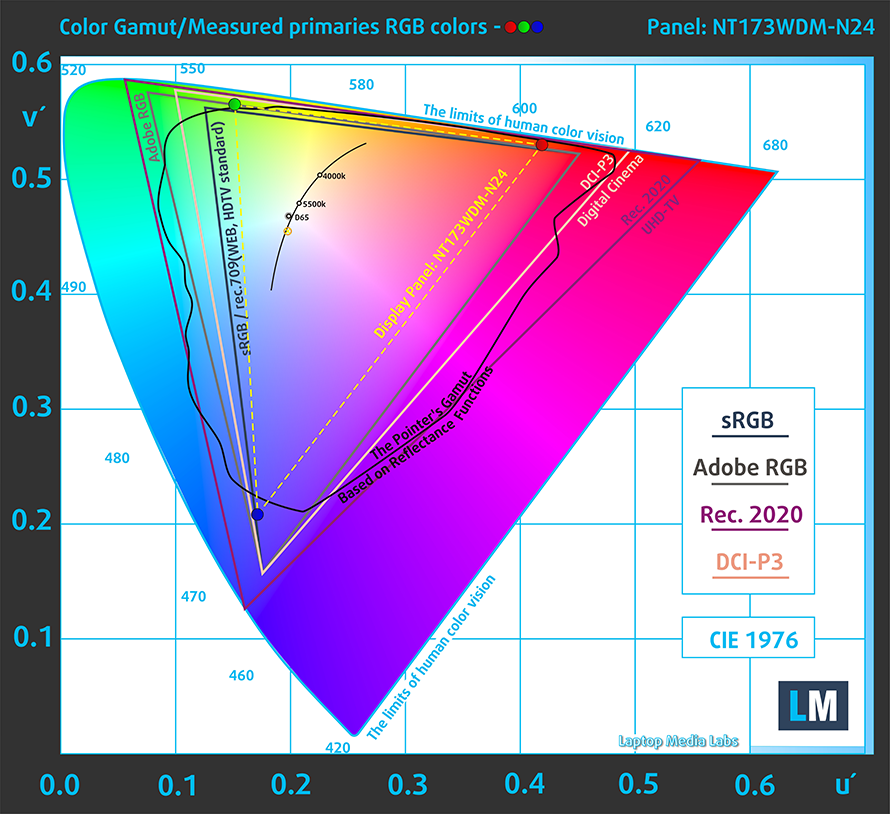
Our “Design and Gaming” profile delivers optimal color temperature (6500K) at 140 cd/m2 luminance and sRGB gamma mode.
We tested the accuracy of the display with 24 commonly used colors like light and dark human skin, blue sky, green grass, orange, etc. You can check out the results at factory condition and also, with the “Design and Gaming” profile.
Below you can compare the scores of AASUS VivoBook 17 X712 with the default settings (left), and with the “Gaming and Web design” profile (right).
The next figure shows how well the display is able to reproduce really dark parts of an image, which is essential when watching movies or playing games in low ambient light.
The left side of the image represents the display with stock settings, while the right one is with the “Gaming and Web Design” profile activated. On the horizontal axis, you will find the grayscale, and on the vertical axis – the luminance of the display. On the two graphs below you can easily check for yourself how your display handles the darkest nuances but keep in mind that this also depends on the settings of your current display, the calibration, the viewing angle, and the surrounding light conditions.
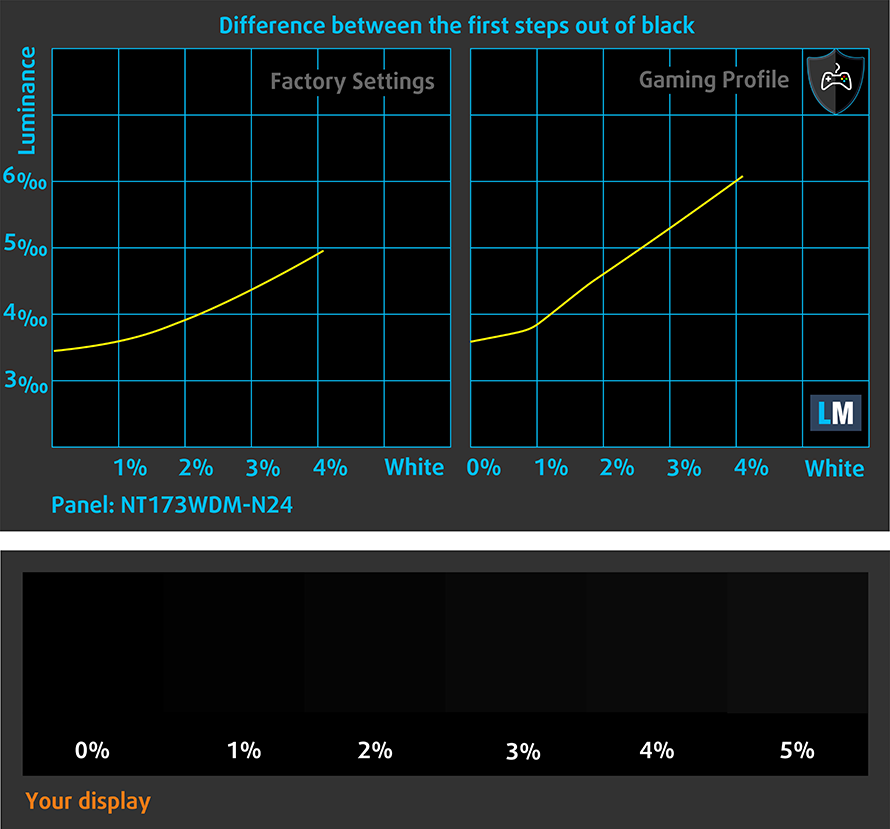
Response time (Gaming capabilities)
We test the reaction time of the pixels with the usual “black-to-white” and “white-to-black” method from 10% to 90% and vice versa.
We recorded Fall Time + Rise Time = 12 ms.
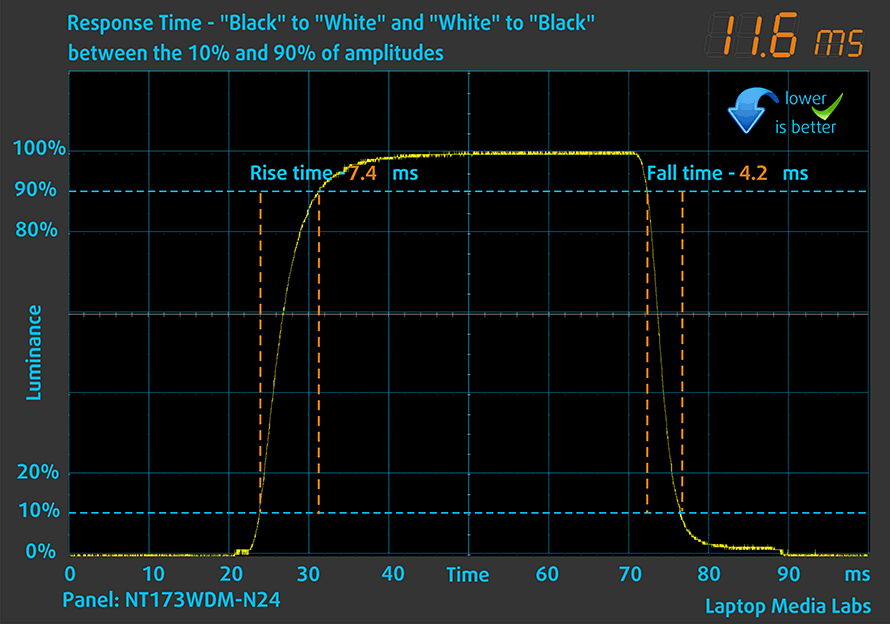
Health impact – PWM / Blue Light
PWM (Screen flickering)
Pulse-width modulation (PWM) is an easy way to control monitor brightness. When you lower the brightness, the light intensity of the backlight is not lowered, but instead turned off and on by the electronics with a frequency indistinguishable to the human eye. In these light impulses, the light/no-light time ratio varies, while brightness remains unchanged, which is harmful to your eyes. You can read more about that in our dedicated article on PWM.
ASUS VivoBook 17 X712’s backlight does not flicker at any brightness level. This ensures comfort to the eyes in this aspect.
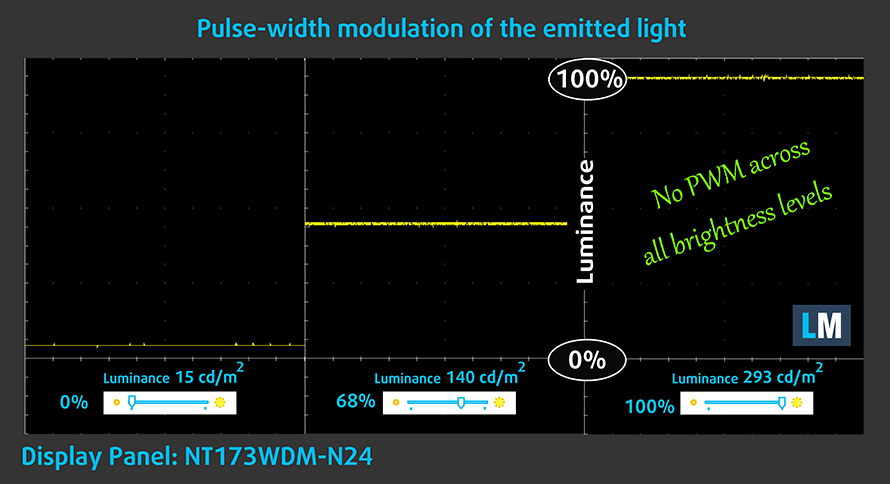
Blue light emissions
Installing our Health-Guard profile not only eliminates PWM but also reduces the harmful Blue Light emissions while keeping the colors of the screen perceptually accurate. If you’re not familiar with the Blue light, the TL;DR version is – emissions that negatively affect your eyes, skin, and your whole body. You can find more information about that in our dedicated article on Blue Light.
Buy our profiles
Since our profiles are tailored for each individual display model, this article and its respective profile package are meant for ASUS VivoBook 17 X712 configurations with 17.3″ BOE NT173WDM-N24 (BOE091A) (HD+, 1600×900) TN.
*Should you have problems with downloading the purchased file, try using a different browser to open the link you’ll receive via e-mail. If the download target is a .php file instead of an archive, change the file extension to .zip or contact us at [email protected].
Read more about the profiles HERE.
In addition to receiving efficient and health-friendly profiles, by buying LaptopMedia's products you also support the development of our labs, where we test devices in order to produce the most objective reviews possible.

Office Work
Office Work should be used mostly by users who spend most of the time looking at pieces of text, tables or just surfing. This profile aims to deliver better distinctness and clarity by keeping a flat gamma curve (2.20), native color temperature and perceptually accurate colors.

Design and Gaming
This profile is aimed at designers who work with colors professionally, and for games and movies as well. Design and Gaming takes display panels to their limits, making them as accurate as possible in the sRGB IEC61966-2-1 standard for Web and HDTV, at white point D65.

Health-Guard
Health-Guard eliminates the harmful Pulse-Width Modulation (PWM) and reduces the negative Blue Light which affects our eyes and body. Since it’s custom tailored for every panel, it manages to keep the colors perceptually accurate. Health-Guard simulates paper so the pressure on the eyes is greatly reduced.
Get all 3 profiles with 33% discount
Sound
ASUS VivoBook 17 X712’s speakers produce a sound of very good quality. Its low, mid, and high tones are clear of deviations.
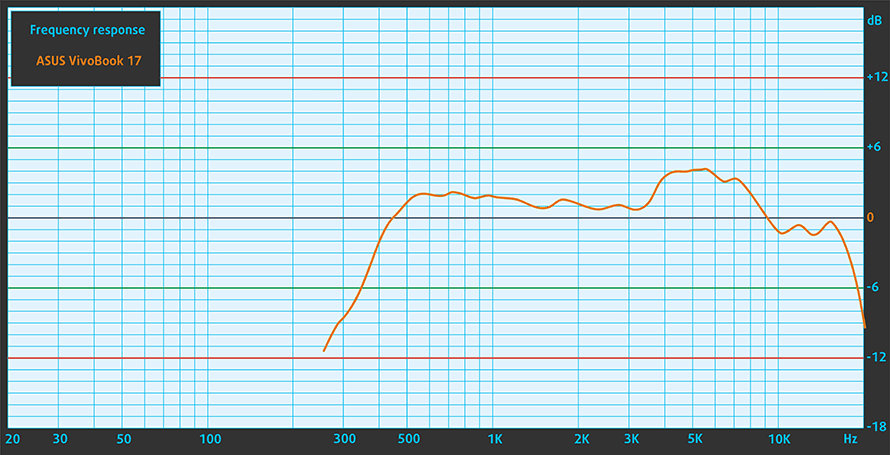
Drivers
All of the drivers and utilities for this notebook can be found here: https://www.asus.com/Laptops/For-Home/Vivobook/Vivobook-17-X712/HelpDesk_knowledge/?model2Name=ASUS-Vivobook-17-X712FA
Battery
Now, we conduct the battery tests with Windows Better performance setting turned on, screen brightness adjusted to 120 nits and all other programs turned off except for the one we are testing the notebook with. This laptop’s 32Wh battery pack lasted for 7 hours and 2 minutes of Web browsing, and 5 hours and 3 minutes of video playback.
In order to simulate real-life conditions, we used our own script for automatic web browsing through over 70 websites.
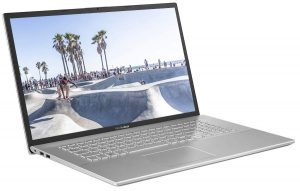
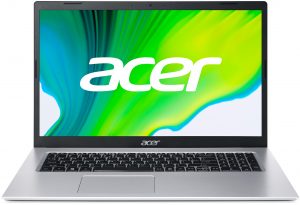
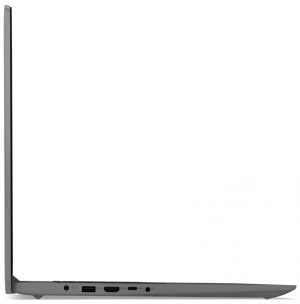
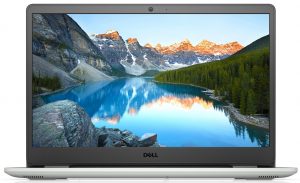
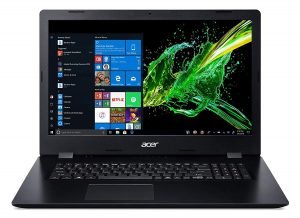
For every test like this, we use the same video in HD.





CPU options
The Tiger Lake version of this laptop can be found with the Core i3-1115G4, Core i5-1135G7, and Core i7-1165G7.
Results are from the Cinebench R23 CPU test (the higher the score, the better)
Results are from our Photoshop benchmark test (the lower the score, the better)
ASUS Vivobook 17 F712 (X712 / K712 / M712 / S712) CPU variants
Here you can see an approximate comparison between the CPUs that can be found in the ASUS Vivobook 17 F712 (X712 / K712 / M712 / S712) models on the market. This way you can decide for yourself which ASUS Vivobook 17 F712 (X712 / K712 / M712 / S712) model is the best bang for your buck.
Note: The chart shows the cheapest different CPU configurations so you should check what the other specifications of these laptops are by clicking on the laptop’s name / CPU.
Results are from the Cinebench R23 CPU test (the higher the score, the better)
Results are from our Photoshop benchmark test (the lower the score, the better)
GPU options
And for graphics, you can rely on the integrated Iris Xe Graphics G4, G7 (80EU), and G7 (96EU).
Results are from the 3DMark: Time Spy (Graphics) benchmark (higher the score, the better)
Results are from the 3DMark: Fire Strike (Graphics) benchmark (higher the score, the better)
Results are from the Unigine Superposition benchmark (higher the score, the better)
ASUS Vivobook 17 F712 (X712 / K712 / M712 / S712) GPU variants
Here you can see an approximate comparison between the GPUs that can be found in the ASUS Vivobook 17 F712 (X712 / K712 / M712 / S712) models on the market. This way you can decide for yourself which ASUS Vivobook 17 F712 (X712 / K712 / M712 / S712) model is the best bang for your buck.
Note: The chart shows the cheapest different GPU configurations so you should check what the other specifications of these laptops are by clicking on the laptop’s name / GPU.
Results are from the 3DMark: Time Spy (Graphics) benchmark (higher the score, the better)
Results are from the 3DMark: Fire Strike (Graphics) benchmark (higher the score, the better)
Results are from the 3DMark: Wild Life (Graphics) benchmark (higher the score, the better)
Results are from the Unigine Superposition benchmark (higher the score, the better)
Gaming tests

| CS:GO | HD 900p, Low (Check settings) | HD 900p, Medium (Check settings) | HD 900p, MAX (Check settings) |
|---|---|---|---|
| Average FPS | 71 fps | 55 fps | 25 fps |

| DOTA 2 | HD 900p, Low (Check settings) | HD 900p, Normal (Check settings) | HD 900p, High (Check settings) |
|---|---|---|---|
| Average FPS | 69 fps | 42 fps | 31 fps |
Temperatures and comfort
Max CPU load
In this test we use 100% on the CPU cores, monitoring their frequencies and chip temperature. The first column shows a computer’s reaction to a short load (2-10 seconds), the second column simulates a serious task (between 15 and 30 seconds), and the third column is a good indicator of how good the laptop is for long loads such as video rendering.
Average core frequency (base frequency + X); CPU temp.
| Intel Core i3-1115G4 (15W TDP) | 0:02 – 0:10 sec | 0:15 – 0:30 sec | 10:00 – 15:00 min |
|---|---|---|---|
| Lenovo ThinkPad L13 Gen 2 | 3.98 GHz (B+33%) @ 78°C @ 35W | 3.88 GHz (B+29%) @ 91°C @ 34W | 2.58 GHz @ 8092°C @ 15W |
| Lenovo ThinkPad L13 Gen 2 | 3.61 GHz (B+20%) @ 90°C @ 26W | 3.37 GHz (B+12%) @ 90°C @ 22W | 2.97 GHz @ 80°C @ 15W |
| MSI Modern 14 (B11) | 3.89 GHz (B+29%) @ 90°C @ 35W | 3.69 GHz (B+23%) @ 92°C @ 32W | 3.57 GHz (B+19%) @ 93°C @ 29W |
| Dell Inspiron 14 5406 2-in-1 | 3.49 GHz (B+16%) @ 99°C @ 27W | 2.79 GHz @ 89°C @ 17W | 2.61 GHz @ 86°C @ 15W |
| Lenovo ThinkPad E14 Gen 2 | 3.99 GHz (B+33%) @ 77°C @ 31W | 3.99 GHz (B+33%) @ 92°C @ 31W | 3.58 GHz (B+19%) @ 87°C @ 26W |
After an initially good start, this device’s frequency drops considerably. Obviously, ASUS has chosen comfort over performance with this one. Although the temperatures are high on the CPU, there was almost no noise coming from the fan.
Comfort during full load
In addition to the lack of noise, we monitored low external temperatures.
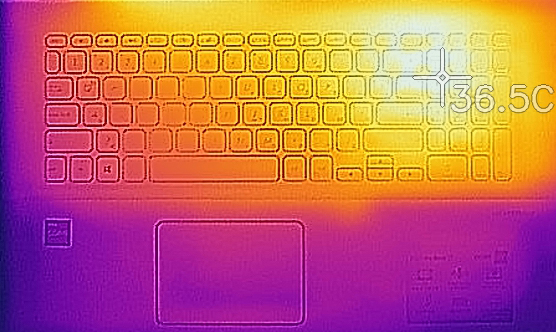
Verdict
 The words “cost-cutting” are written all over this laptop. From the plastic body panels, that are flimsy but light, to the 900p TN display, and the lack of 2.5-inch SATA drive mounting accessories inside the box. And buying a laptop in this price bracket shouldn’t always mean that you have to make every sacrifice out there. Take the Lenovo IdeaPad 3 (17″, 2021) for example.
The words “cost-cutting” are written all over this laptop. From the plastic body panels, that are flimsy but light, to the 900p TN display, and the lack of 2.5-inch SATA drive mounting accessories inside the box. And buying a laptop in this price bracket shouldn’t always mean that you have to make every sacrifice out there. Take the Lenovo IdeaPad 3 (17″, 2021) for example.
Nevertheless, we have to mention the tiny 32Wh battery pack, which did nothing but heroics here to last through 7 hours of Web browsing before running out of juice. Yet again, playing HD videos shows a more realistic picture, as the battery lasted for about 5 hours during this stunt.
ASUS VivoBook 17 X712’s display in the configuration we tested has a TN panel (BOE NT173WDM-N24 (BOE091A)) with a rather low resolution for the large screen size. The good things about it start with the lack of PWM for brightness adjustment and end with the fast pixel response times. Unfortunately, its viewing angles are very narrow, the contrast ratio is low, and the color coverage is quite limited.
As far as the port selection goes, you don’t receive an RJ-45 connector, but you get a MicroSD card slot. Yet again, two of the three USB Type-A ports run at 2.0 speeds, which is unfathomable in 2021. And although the upgrade options are not too bad, we just can’t let go of the fact, that our unit was equipped with a 900p TN panel. Devices like the Acer Aspire 3 (A317-33) use a Full HD IPS display, and in our view, either the aforementioned Aspire or the Lenovo IdeaPad 3 (17″, 2021) would be far better options than the VivoBook 17 X712 we had with us today.
You can check the prices and configurations in our Specs System: https://laptopmedia.com/series/asus-vivobook-17-f712-x712-k712-m712-s712/
Pros
- Adequate pricing
- 1x RAM SODIMM + 1x M.2 NVMe + 2.5-inch SATA drive bay
- MicroSD card reader
- No PWM (BOE NT173WDM-N24 (BOE091A))
Cons
- Battery life is only average (still respectable given the tiny 32Wh unit)
- 2/3 USB Type-A ports are slow
- Narrow viewing angles and poor contrast ratio (BOE NT173WDM-N24 (BOE091A))
- Not a great build quality

